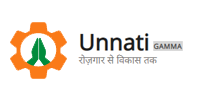1.1 The Employment Service came into existence in India under the stress of postwar demobilization. Towards the end of the Second World War, the need for a machinery which could handle orderly reabsorption of civil life, of a large number of service personnel and war workers who were about to be released as keenly felt. Having regard to the complexity of the problem and in order to ensure uniformity in policies and effective co-ordination of efforts it was considered necessary that the proposed machinery be directed and controlled by the Central Government. In accordance with a scheme that was agreed upon by the Central and State Governments, the Directorate General of Resettlement and Employment (D.G.R.&E) was set up in July 1945 and Employment Exchanges were gradually opened in several parts of the country.
1.2 Till the end of 1946, Employment Service facilities were restricted to demobilized service personnel and discharged war workers. In 1947,consequent upon the partition of the country, the Employment Exchanges were called upon to deal with the resettlement of a large number of persons who were displaced as a result of partition. In response to popular demands, the scope of the service was gradually extended and by early 1948, Employment Exchanges were thrown open to all categories of applicants.
1.3 This transition of the Employment Service from a resettlement agency to an all India placement organization resulted in an enormous increase of work, which called for long-term measures. It was felt that the organization which was hurriedly set-up totackle the immediate problem of resettlement of released war service personnel, required to be restructured if it was to function as an effective machinery which could facilitate and further the employment process. Accordingly, the Training and Employment Services Organisation Committee (popularly known as Shiva Rao Committee) was appointed in 1952 (under the chairmanship of Shri B.Shiva Rao), to review the set-up and functions of the Employment Service and to make recommendations for its reorganization. The Committee submitted their report in 1954 which was mainly responsible for the present structure of the organisation and diversification of its functions in the field of Occupational Research, Vocational Guidance and Employment Market Information. Based on the recommendations of the committee, the day-to-day administration of the organisation was handed over to the State Governments with effect from 1st November 1956.
1.4 The Government of India had also appointed in March, 1978, a Committee on National Employment Service under the Chairmanship of Shri P.C. Mathew (popularly known as Mathew Committee) to examine the various aspects of the Working of Employment Exchanges, and to suggest suitable measures to make it more responsive to changing circumstances and needs. This Committee submitted its report in November, 1978 and made a number of recommendations for improvement of the Employment Service. Some of the recommendations made by this committee have been accepted by the Government for implementation.
1.5 The Employment Service is now the joint concern of the Central and State Governments.









